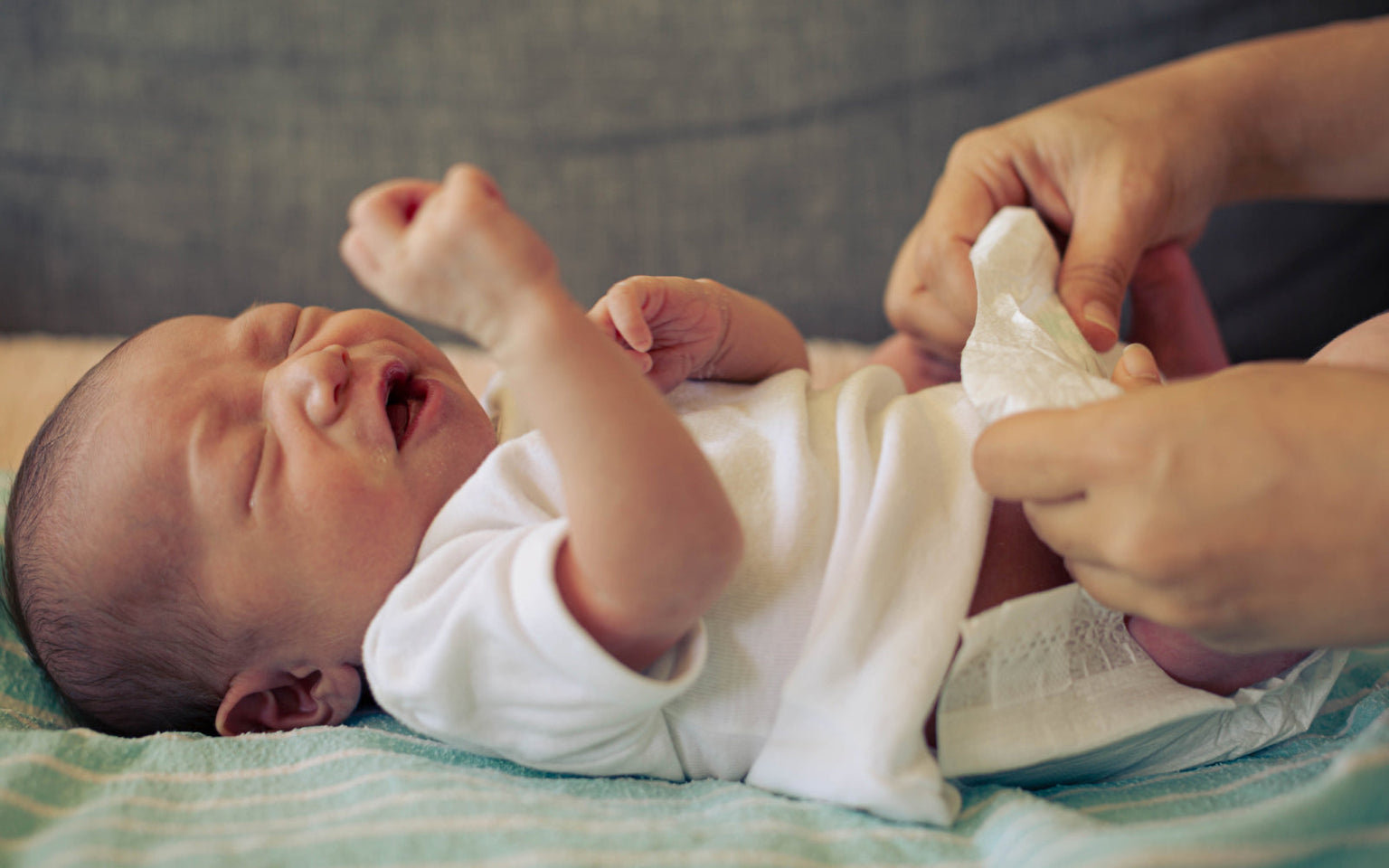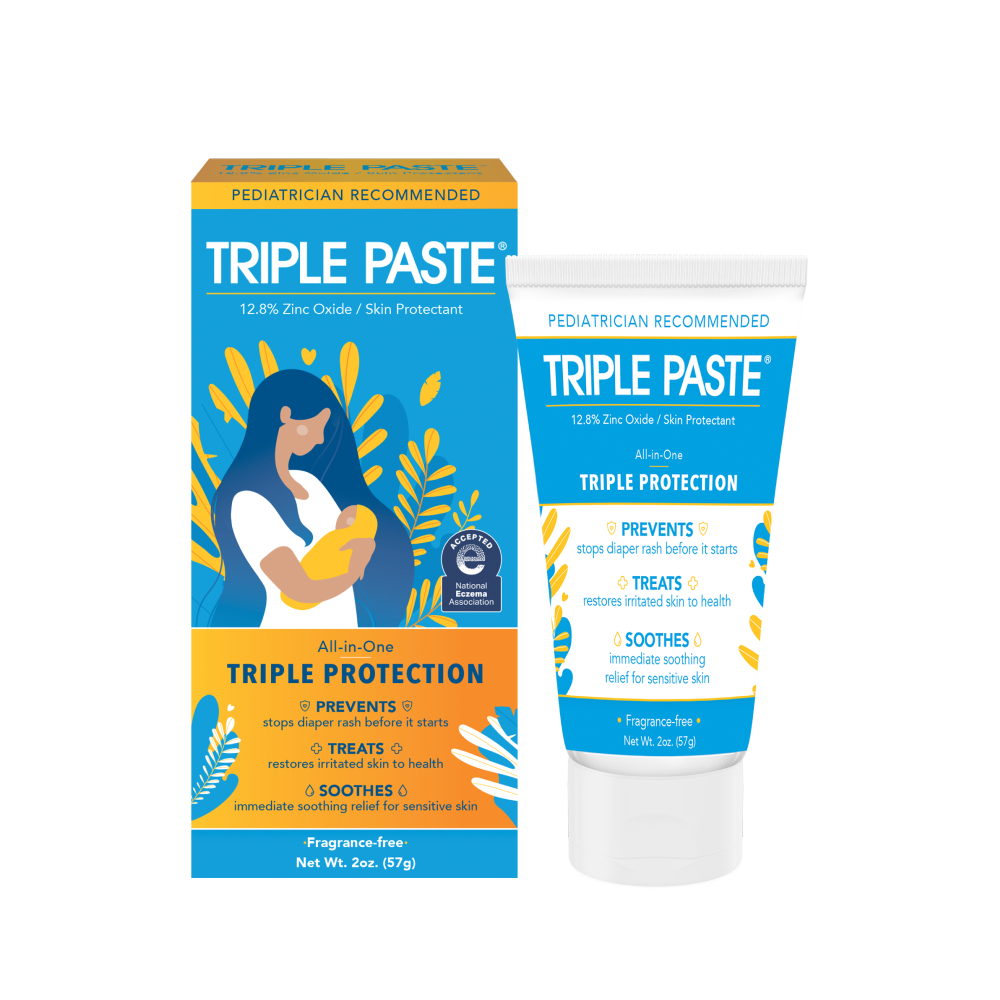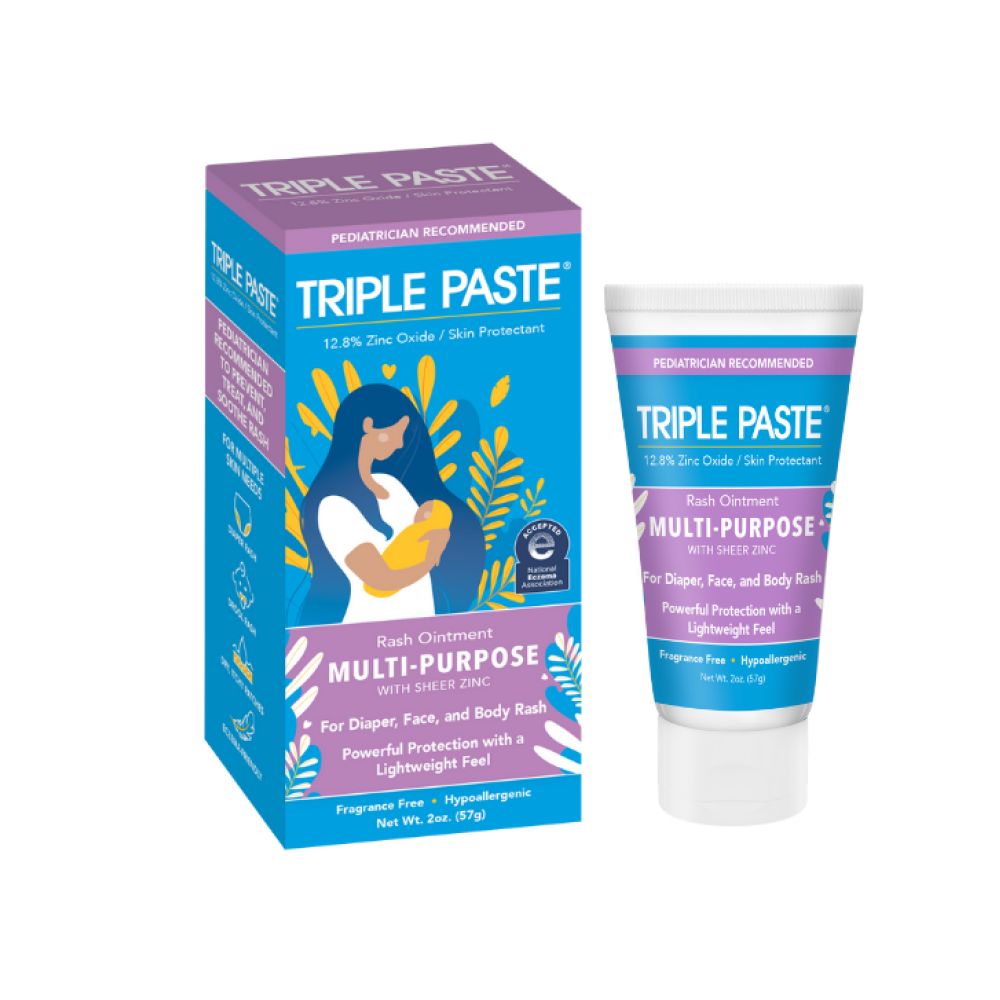Diaper Rash SOS: Strategies for Severe Diaper Rash
Severe diaper rash can be stressful and uncomfortable for both you and your baby. No parent likes to see their baby in pain with their delicate skin turning red, raw or blistered. When diaper rash becomes severe, every diaper change becomes a challenge, but understanding what causes it and how to treat it can help you become a pro at preventing and managing severe diaper rash.
Understanding Severe Diaper Rash
Severe diaper rash is an intense and distressing form of diaper dermatitis that can cause significant discomfort to your baby. Key signs to watch for include:
- Red, raw, broken or bleeding skin: The rash appears red, irritated, and sometimes as broken skin that may bleed.
- Blisters, pimples, sores, or boils: These can develop along with other red bumps, in the affected area
- Bright red border: The rash typically has a distinct red border and may cover a large area.
- Painful to touch: The affected area is often very sensitive and painful when touched.
- Discomfort and behavioral changes: Your baby may be noticeably uncomfortable, irritable, or have trouble sleeping.
- Blood in stools: If you notice blood in your baby’s stool or they have a fever, you may be dealing with a more serious condition that requires immediate attention from your pediatrician.
What Causes Severe Diaper Rash
Diaper rash can become severe due to any number of factors. The most common ones are:
- Prolonged exposure to moisture: When skin is in contact with urine and stool, it can break down, leading to irritation. Substances like ammonia and enzymes from urine in a wet diaper can aggravate the rash.
- Irritant contact dermatitis: Chemicals, fragrances, and detergents in disposable and cloth diapers or wipes can cause irritation.
- Bacterial infection: The warm, moist environment of a diaper is an ideal breeding ground for bacteria, leading to infections that worsen the rash.
- Yeast infection: Candida yeast infections can be common, especially after antibiotic use. If you suspect your baby has a yeast rash, check out our article on “Identifying and Treating Diaper Rash .”
- Allergic contact dermatitis: Fragrances, preservatives, or dyes in diapers, wipes, lotions and powders can cause allergic reactions to baby’s sensitive skin.
- Skin sensitivities: Sensitive skin can become irritated from even the most hypoallergenic products.
- Improper fit and friction: Diapers that are too tight can cause chafing and irritation, especially where diapers can rub against the skin.
- Movement friction: Active babies can experience increased friction from their diapers, contributing to or worsening existing rashes.
- Introduction of new foods and dietary changes: As babies transition to solid foods, stool consistency and acidity changes, sometimes leading to a more severe rash. Food allergies or sensitivities can also trigger a persistent rash. Usually, an allergic rash appears outside the diaper area as well.
Preventive Measures for Severe Diaper Rash
In many cases, severe diaper rash can be treated successfully at home with the following key practices:
- Keep the bottom area clean and dry — Change wet or soiled diapers more frequently, especially during rash flare-ups. This may mean having to change diapers more often, even during the night. You can also offer diaper-free time by letting baby crawl around on a protected surface to let the bottom air out
- Rinse your baby’s bottom — If the area is sore, a squirt bottle with warm water or a gentle washcloth might be a better solution than baby wipes. If you use wipes, choose those that are fragrance-free, hypoallergenic, and/or alcohol-free, and dab gently instead of wiping or rubbing.
- Gently pat, not rub — Again, don’t wipe or rub especially if your baby’s bottom is red and irritated. Let the area dry before rediapering.
- Apply a diaper rash cream — Use a maximum strength non-nano zinc oxide cream to form a waterproof barrier on the skin, which can help improve healing. (Non-nano zinc oxide consists of larger particles that are not absorbed by the skin, so it forms a more resilient barrier.)
- Rediaper your baby properly — Make sure to choose diapers that fit properly to reduce friction, and avoid aggravating your baby’s irritated skin.
- Avoid tight clothing — Dress your baby in loose-fitting clothing made from breathable fabrics to allow for good air circulation.
- Keep a food diary — Monitor how new foods are affecting your baby’s digestion and diaper area. Check out more tips on our blog on the impact of Solid Foods & Diaper Rash.
If your baby’s diaper rash recurs, gets worse despite several days of treatment, or is accompanied by a fever, it may be time to see your pediatrician. If there’s no improvement in 3 days or you see yellow or green drainage around the rash you may be dealing with a yeast or bacterial infection and might need a prescription topical or oral treatment.
Navigating the challenges of severe diaper rash can feel overwhelming, but remember, these moments are temporary. Both Triple Paste and your pediatrician can serve as a resource for you to help keep your baby’s skin healthy and comfortable.



